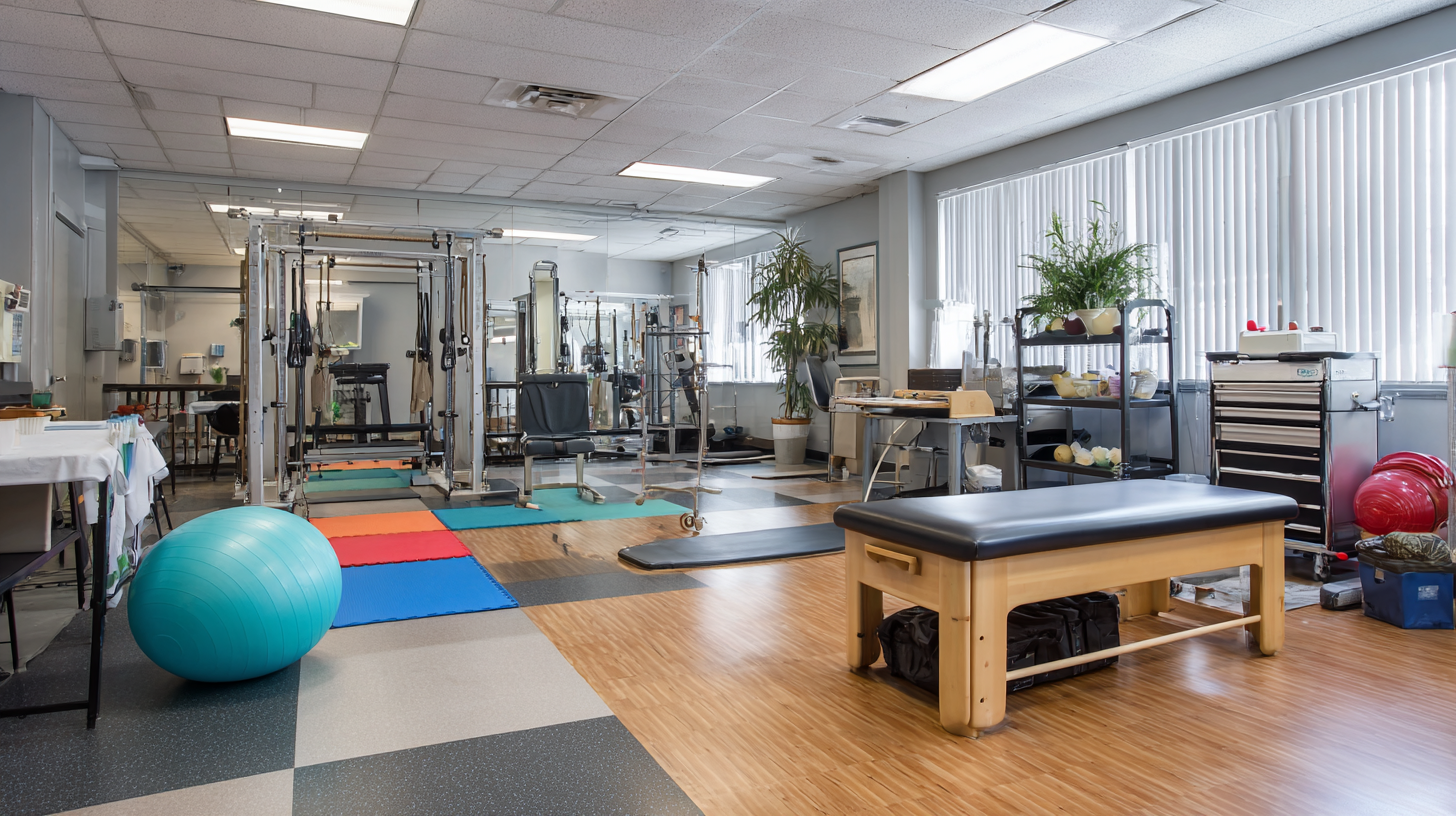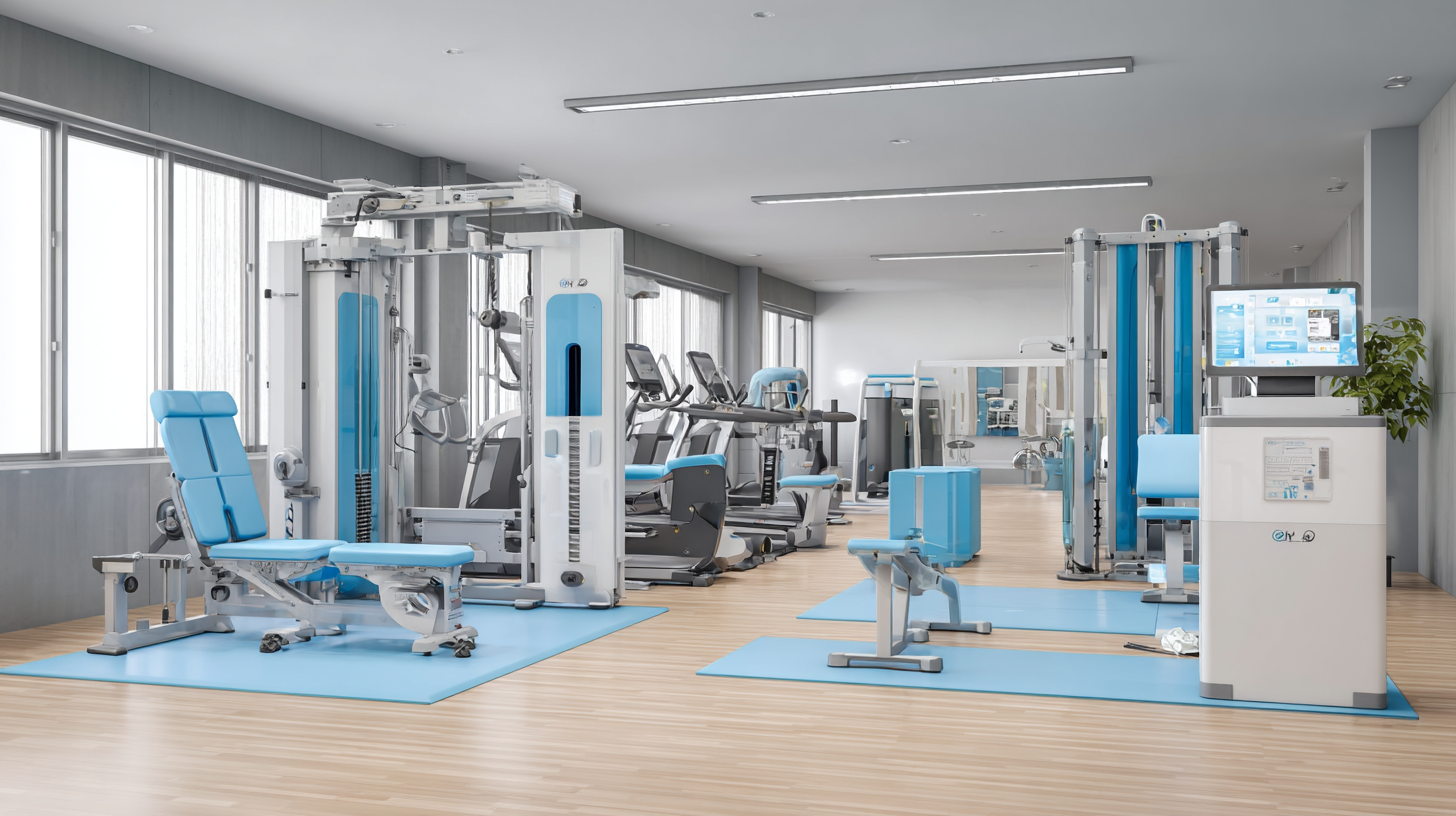Top Strategies for Selecting the Best Physical Therapy Equipments for Optimal Patient Recovery
In the realm of healthcare, the effectiveness of patient recovery is significantly influenced by the quality of Physical Therapy Equipments utilized in treatment plans. According to a report from the American Physical Therapy Association, nearly 70% of patients express that the type of equipment used directly impacts their rehabilitation experience and outcomes. Moreover, the global physical therapy equipment market is projected to reach $19.7 billion by 2025, highlighting the growing recognition of the importance of specialized tools in enhancing patient care. Selecting the right equipment is, therefore, critical not only for improving functional outcomes but also for ensuring patient satisfaction and compliance. This blog aims to provide a comprehensive checklist of strategies for healthcare professionals to effectively choose the best Physical Therapy Equipments that cater to diverse recovery needs, ultimately paving the way for optimal patient recovery.

Key Factors to Consider When Choosing Physical Therapy Equipment
When selecting the best physical therapy equipment for optimal patient recovery, it's crucial to consider various factors that can significantly impact the effectiveness of the treatment process. First and foremost, understand the needs of your patient demographic. Different patients may require specific types of equipment based on their conditions, age group, and physical capabilities. For instance, using the right type of resistance bands can enhance rehabilitation exercises and promote strength-building effectively.
Another important factor to consider is the distribution channel of the equipment. Whether purchasing through hospitals, medical retail stores, or online platforms, evaluating the reliability and quality of the suppliers can ensure that you’re getting the best equipment. Be sure to look for warranties and customer reviews to gauge the effectiveness and durability of the products.
Furthermore, integration of software solutions in physical therapy can streamline the treatment process. The physical therapy software market is projected to grow significantly, driven by the increasing demand for efficient therapy services. Investing in the right software can aid in better patient management and tracking recovery progress, ultimately leading to more successful outcomes in therapy sessions.
Top Strategies for Selecting the Best Physical Therapy Equipment for Optimal Patient Recovery
Comparative Analysis of Popular Equipment Brands for Rehabilitation
When choosing physical therapy equipment for optimal patient recovery, it's crucial to conduct a comparative analysis of popular brands in the market. Key players like Theraband, Life Fitness, and Medtronic each offer unique features that cater to various rehabilitation needs. Theraband's resistance bands, for instance, have gained attention for their versatility and effectiveness in improving muscle strength and mobility, making them a staple in many therapy clinics. On the other hand, Life Fitness provides a range of high-tech rehabilitation machines that incorporate advanced monitoring systems, ensuring patients receive real-time feedback on their performance and progress.
Medtronic stands out with its innovative modalities such as electrical stimulation devices which can significantly reduce pain and inflammation, facilitating faster recoveries. By evaluating the cost, durability, and clinical feedback for each brand, practitioners can identify which equipment aligns best with their patient demographics. This thoughtful selection process not only enhances therapeutic outcomes but also fosters an environment of trust and professionalism where patients feel confident in their recovery journey.

Evaluating Cost vs. Quality in Physical Therapy Tools
When selecting physical therapy equipment, the balance between cost and quality is paramount. Practitioners must consider the long-term benefits of investing in high-quality tools that are designed to withstand rigorous daily use. While cheaper options might seem attractive initially, they often compromise on durability and effectiveness, which can ultimately lead to increased costs due to frequent replacements and repairs. Therefore, prioritizing quality not only enhances patient outcomes but also provides better value over time.
Moreover, evaluating the specific needs of patients and the therapy modalities being utilized can guide practitioners in making informed decisions about their equipment purchases. Investing in versatile tools that cater to a range of rehabilitation exercises can maximize the utility of each piece of equipment. As such, performing a thorough cost-benefit analysis that weighs the potential lifespan and benefits of high-quality equipment against initial outlay is essential. This strategic approach ensures that physical therapy practices are not only equipped with the best tools for optimal recovery but are also financially sustainable in the long run.
Essential Features of Effective Rehabilitation Machines
When selecting physical therapy equipment, understanding the essential features of effective rehabilitation machines is crucial for optimal patient recovery. First and foremost, versatility is key. Equipment that can accommodate a variety of exercises and movements allows therapists to customize treatment plans to meet individual patient needs. Machines that offer adjustable resistance levels and multidirectional movement capabilities enable progressive rehabilitation, which is vital for improved strength and mobility.
Another important feature is user-friendliness. Rehabilitation machines should be intuitive and easy to operate, minimizing the need for extensive training for both therapists and patients. Clear instructional displays and comfortable settings promote adherence to therapy routines, making it easier for patients to engage with their recovery process. Additionally, safety features such as stable bases, secure harnesses, and emergency stop buttons are essential to prevent accidents during sessions and boost patient confidence. Together, these features contribute to a comprehensive rehabilitation environment, ultimately enhancing the recovery experience for patients.
Top Strategies for Selecting the Best Physical Therapy Equipments for Optimal Patient Recovery
| Equipment Type | Essential Features | Benefits | Considerations for Selection |
|---|---|---|---|
| Therapeutic Ultrasound | Adjustable frequency and intensity settings, portable design | Promotes tissue healing, reduces inflammation | Verify portability and ease of use |
| Electrical Stimulation Units | Multiple modes of stimulation, adjustable timer | Pain relief, muscle strengthening | Check for user-friendliness and treatment options |
| Therapy Bands and Weights | Various resistance levels, durable materials | Improves strength and flexibility | Select appropriate resistance based on patient level |
| Hydrotherapy Equipment | Temperature control, adjustable water depth | Reduces pain, increases circulation | Consider space requirements and maintenance |
| Smart Rehabilitation Devices | Real-time tracking, app integration | Personalized recovery plans, engaging therapy | Assess data privacy and technology compatibility |
User Feedback: How Reviews Influence Equipment Selection
When selecting the best physical therapy equipment for optimal patient recovery, user feedback plays a critical role. In the realm of physical therapy, practitioners often rely on the experiences shared by peers and patients to make informed decisions about the tools they use. Reviews not only provide insights into the effectiveness and durability of equipment but also highlight user satisfaction, which can significantly influence purchasing decisions.

Furthermore, feedback from users can pinpoint specific features that therapists find beneficial or cumbersome. For instance, a piece of equipment that is praised for its ease of use may encourage therapists to adopt it, knowing it will facilitate better treatment outcomes. Conversely, devices frequently criticized for lack of comfort or inefficiency may be less likely to be selected, no matter how innovative their design claims to be. This dynamic underscores the importance of gathering and interpreting user reviews to enhance the quality of care in physical therapy settings.
